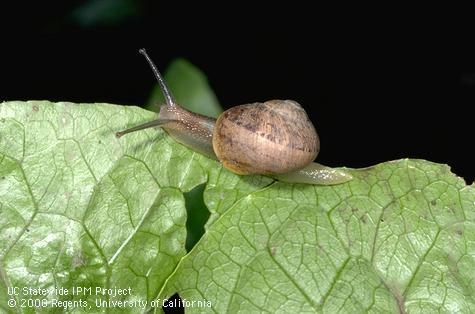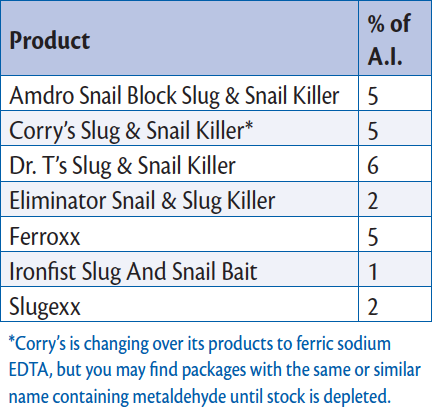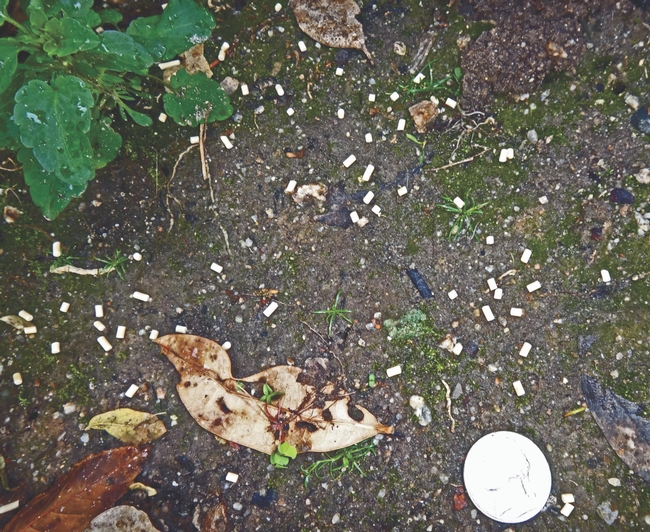[From the May 2013 issue of the UC IPM Green Bulletin newsletter]
For the last 30 years, the primary mollusk (snail and slug) 
You can find this active ingredient in new formulations of Corry's Slug & Snail Killer as well as Dr. T's Slug & Snail Killer, Slugexx, Iron Fist Slug & Snail Bait, Amdro Snail Block Slug & Snail Killer, and Ferroxx. Ferroxx is marketed
Although all these active ingredients are effective against snails (Figure 1) and slugs (Figure 2), there are important differences. Metaldehyde works very quickly, and you will see foaming and dead snails by the morning if applied at night. However, metaldehyde can poison and even kill dogs and other mammals that might feed on it.
Iron phosphate is much safer but also much slower acting. Snails may stop feeding on plants after consuming iron phosphate baits but can take up to seven days to die. On the plus side, iron phosphate may be more effective than metaldehyde during periods of high humidity or if there are rainy conditions.

Also note that recommended application rates for ferric sodium EDTA may be considerably lower than iron phosphate (Table 2). Formulated iron phosphate and ferric sodium EDTA molluscicides look very similar, so it is important to check the label to be certain the product is applied at the appropriate rates. To be most effective, products containing the active ingredients metaldehyde, ferric sodium EDTA, or iron phosphate should be broadcast or spread, not piled, near areas where the mollusks are causing damage (Figure 3).
Applicators and maintenance workers should also be reminded to remove plant debris and other snail and slug hiding places and to avoid overwatering, which increases mollusk activity.
For more information about snail and slug management, see Pest Notes: Snails and Slugs. Briefer versions of this information, called Quick Tips, are also available on the UC IPM Web site both in English and Spanish.


This article was originally published in the May 2013 issue of the UC IPM Green Bulletin. See this and other articles at http://www.ipm.ucdavis.edu/greenbulletin/index.html.